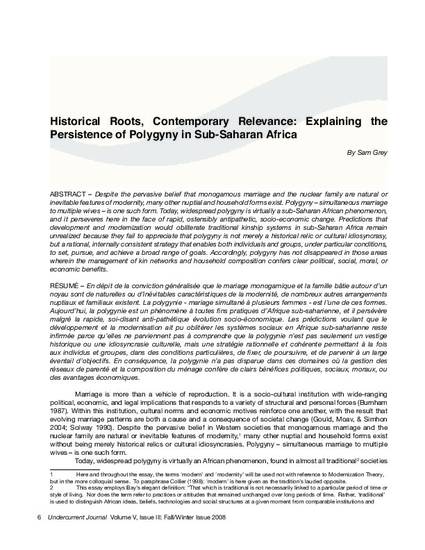
Despite the pervasive belief that monogamous marriage and the nuclear family are natural or inevitable features of modernity, many other nuptial and household forms exist. Polygyny – simultaneous marriage to multiple wives – is one such form. Today, widespread polygyny is virtually a sub-Saharan African phenomenon, and it perseveres here in the face of rapid, ostensibly antipathetic, socio-economic change. Predictions that development and modernization would obliterate traditional kinship systems in sub-Saharan Africa remain unrealized because they fail to appreciate that polygyny is not merely a historical relic or cultural idiosyncrasy, but a rational, internally consistent strategy that enables both individuals and groups, under particular conditions, to set, pursue, and achieve a broad range of goals. Accordingly, polygyny has not disappeared in those areas wherein the management of kin networks and household composition confers clear political, social, moral, or economic benefits.
- feminist economics,
- gender and development,
- and polygyny
Available at: http://works.bepress.com/samgrey/6/
